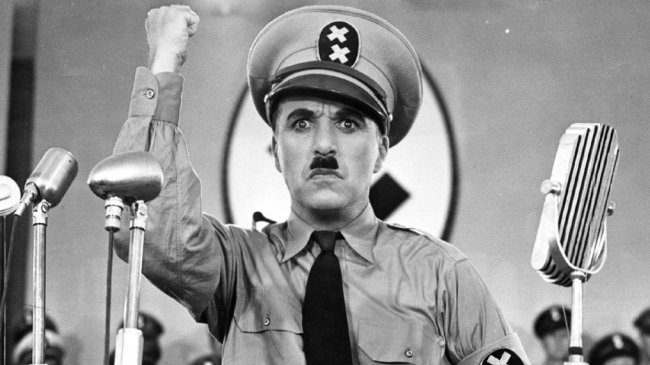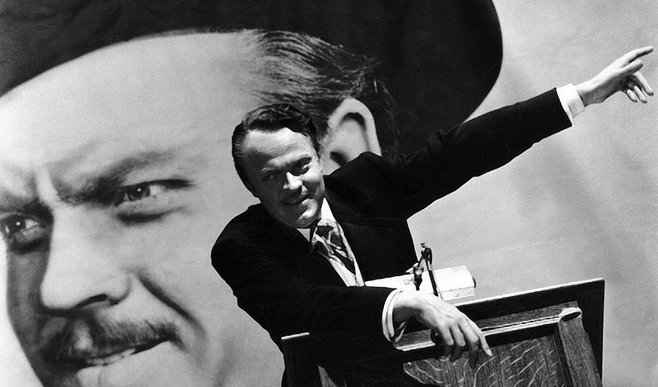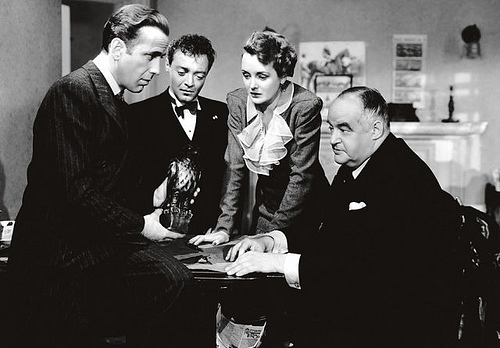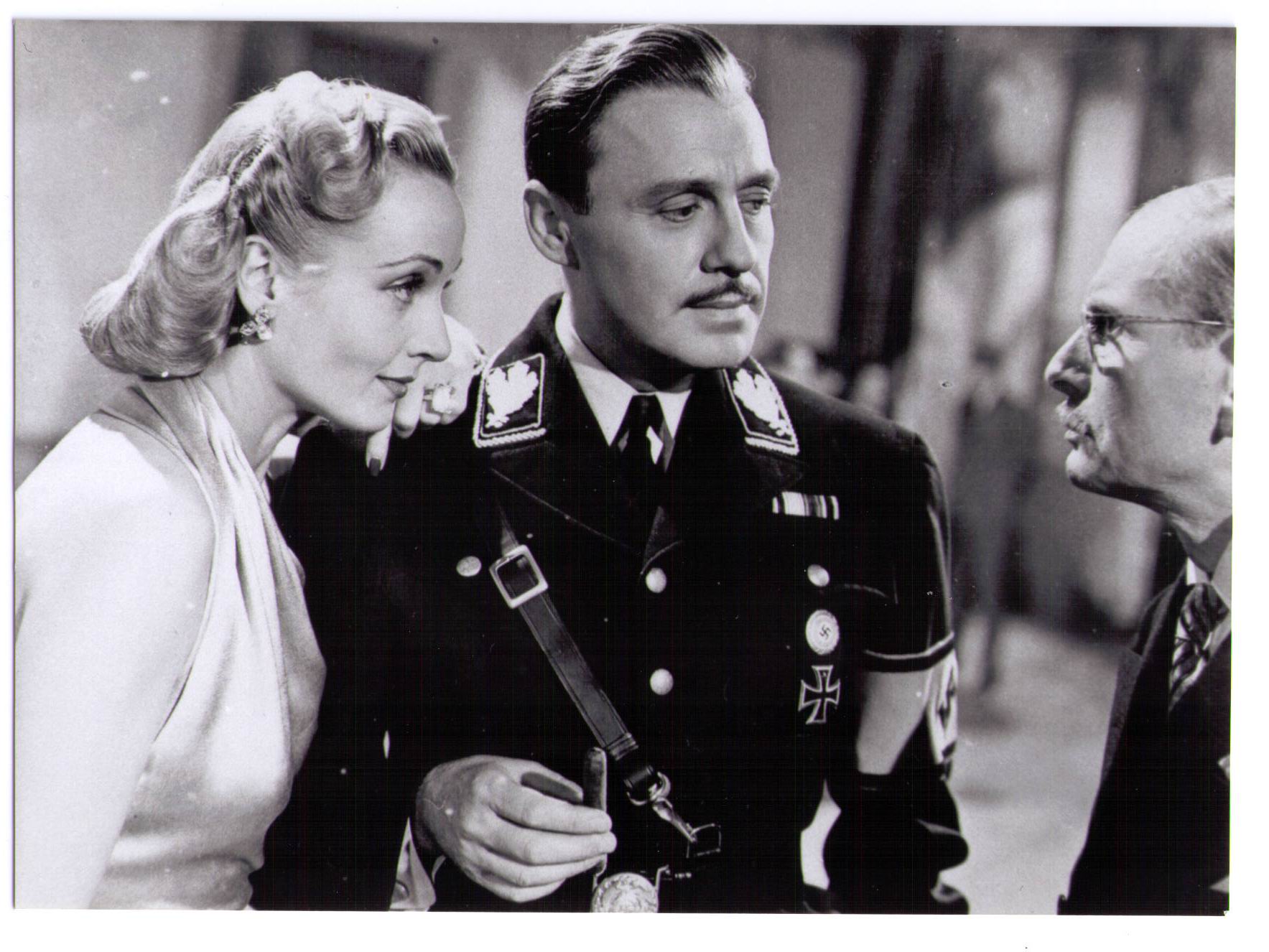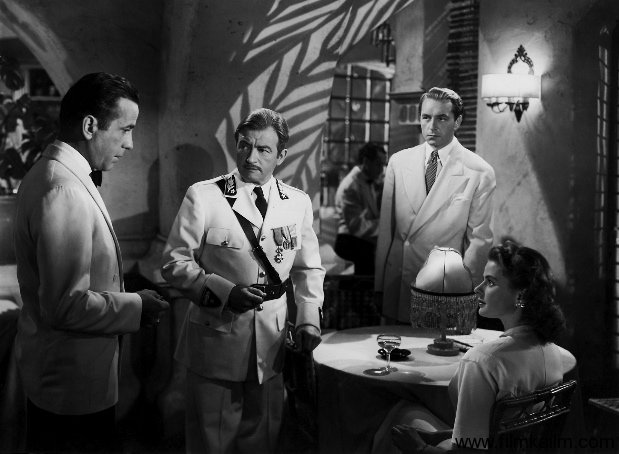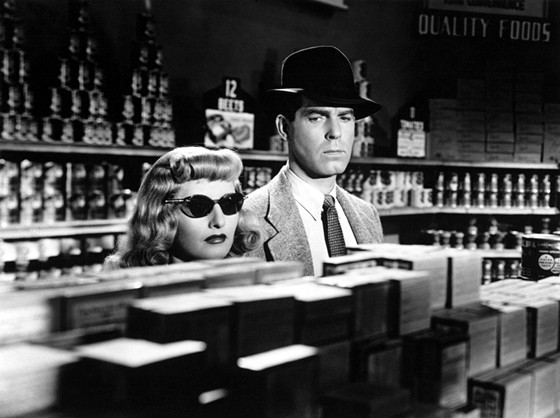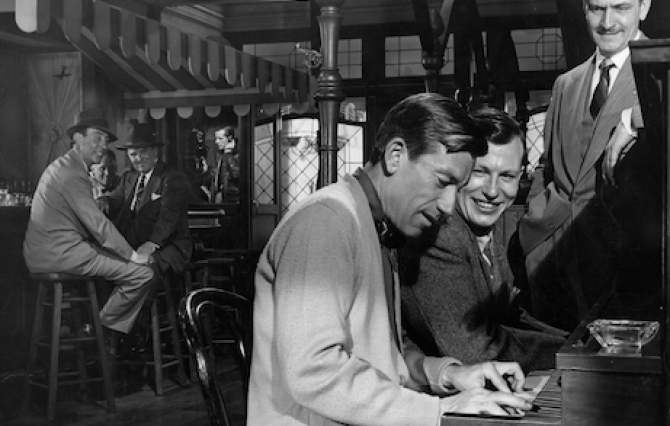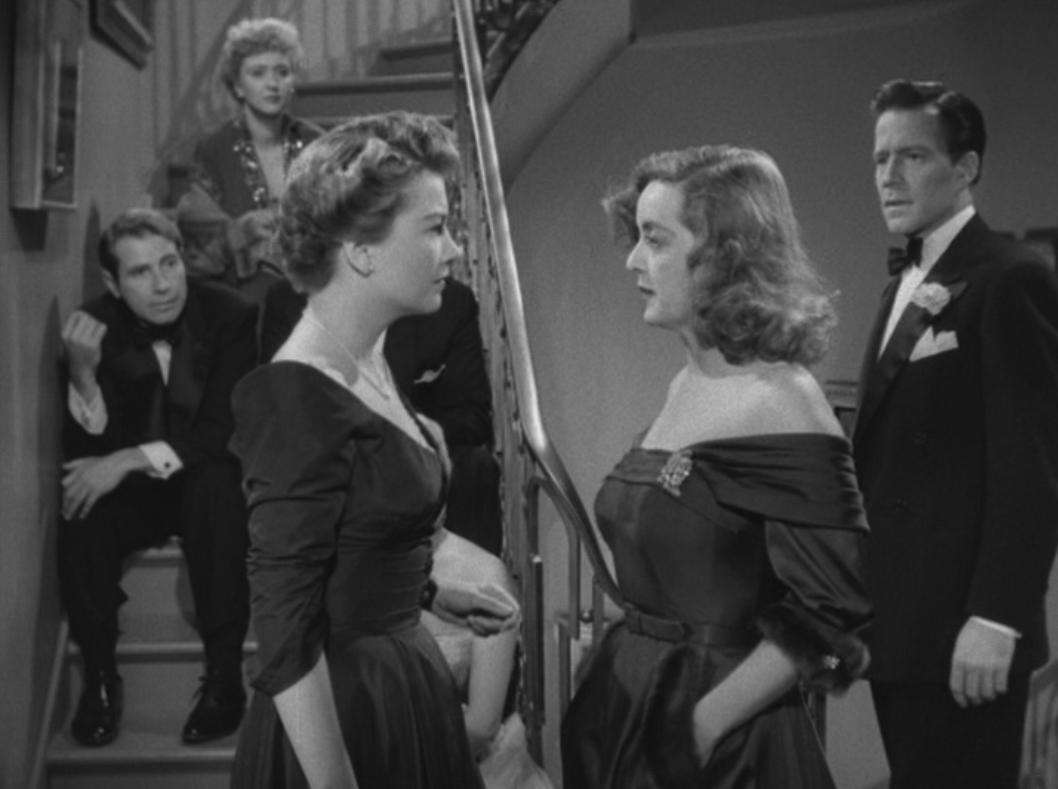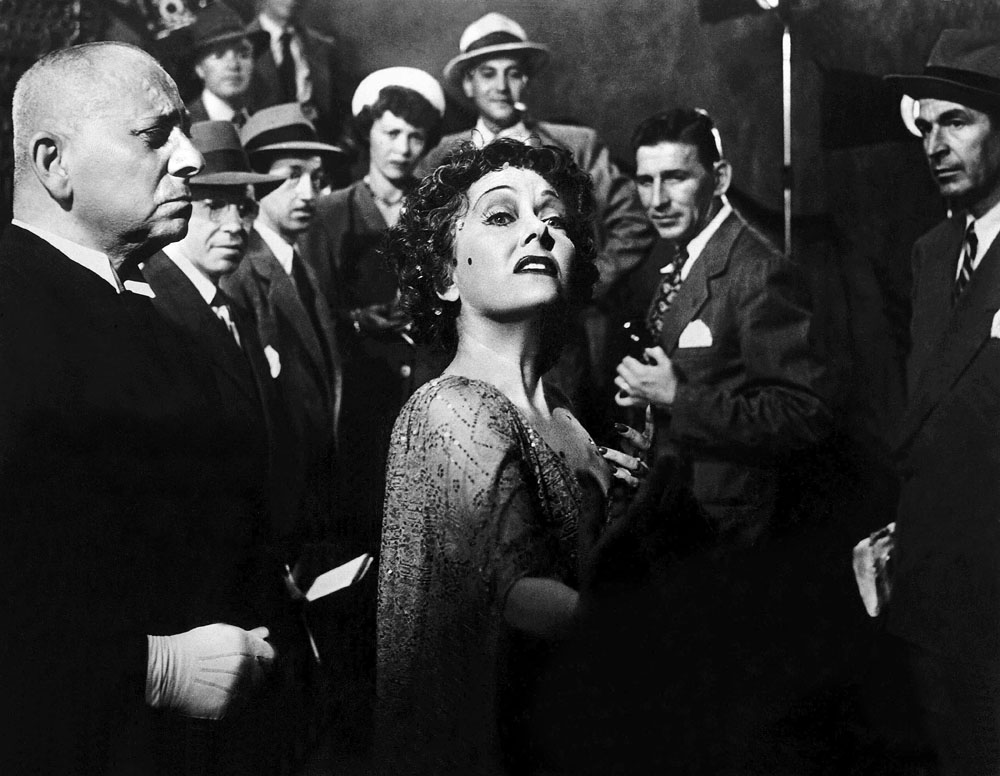11. The Great Dictator (1940)
For his first 100% talking-picture, master Charles Chaplin chose a controversial subject: a satire of Nazi fascism’s leaders and ideologies – at a time The United States had not yet declared War on The Axis powers.
Chaplin plays both mains roles, that of a Jewish barber and his Dictator persecutor Adenoid Hynkel. The artist’s courage was recognized by both public and critics. The movie soon became his most commercially profitable work and also scored five Academy Awards nominations, including Best Picture, Actor and Screenplay for Chaplin himself.
The Great Dictator is a landmark of Cinema and one of the most historically important films ever made, plus it carries some of Chaplin’s funniest moments on the screen, such as the often imitated scene in which Hynkel dances with a balloon world globe.
12. Citizen Kane (1941)
Consistently deemed the best movie ever made by critics from all over the world, Orson Welles’ debut picture opened in 1941 to a poor box-office reception, costing Production Company RKO a loss of $160.000. Even before its release, Kane suffered from a boycott campaign launched by newspaper tycoon William Randolph Hearst. The magnate was enraged by the film’s plot which was said to have been influenced by his life.
Although promoted as love story by its studio, Citizen Kane is really a meditation on the old saying “money doesn’t bring happiness” and an attempt to analyze a man’s life in all its complexity. When the news of the passing of publishing mogul Charles Foster Kane breaks, reporters try to find the meaning of his last word: Rosebud.
Through a series of innovative flash-backs, Welles abandons classical narrative style and presents his main character through different lights and it’s up to the spectator piece things together on his own (as a metaphor, Susan Alexander, Kane’s second wife, is portrayed many times assembling pieces of a jigsaw puzzle).
13. The Maltese Falcon (1941)
The Dashiell Hammett hard-boiled novel had been adapted to the screen twice before, but both previous versions failed completely to maintain Hammett’s true to life style, in which the detective is not a simple mechanism to solve crimes, but a human-being with its contradictions and faults and the essential question is no longer “Who did it?” but “How will the protagonist act?”.
In his directorial debut, John Huston opted to adapt the book himself and succeeded by keeping most of the original dialogue. Unbeknownst to him, the director virtually created a new type of film which the French would later designate as “Film Noir”.
Humphrey Bogart’s Sam Spade became the new genre’s model of private detective: A flawed hero whose cynicism and egotism are trademarks. Cinematographer Arthur Edeson also set a standard by choosing low-key lighting and striking angles that, to date, have become completely identified with Noir.
14. To Be or Not to Be (1942)
Public and critics alike dismissed To Be or Not To Be when it first opened in 1942. The sophisticated satire of the Nazis was difficult to assimilate in light of the real-life threat the world was under.
The ingenious plot follows an acting company in Nazi-occupied Poland while they use their talents to deceive the German soldiers. Carole Lombard, Jack Benny and Robert Stack lead the cast of the Ernst Lubitsch film that has since become a comedy classic, celebrated as the pinnacle of what experts named “The Lubitsch Touch” referring to the filmmaker’s distinct style.
Sadly, it is also remembered for being Lombard’s last film, the 33-year-old actress would die in an airplane crash while returning home from a war bond tour, shortly after having completed shooting. Her performance as Maria Tura has often been praised as one of the best of her career.
15. Casablanca (1942)
Set in the African town of Casablanca at the dawn of World War II, the movie follows Rick Blaine (Humphrey Bogart), an American émigré who owns an infamous nightclub and gambling house attended by a diverse public: From Nazis and thieves to refugees who dream about reaching The United States.
The reason behind Rick’s apparent neutral and egotistical attitude is revealed when ex-lover Ilsa Lund (Ingrid Bergman) walks back into his life. In the role that shot him to stardom, Bogart must choose between helping the Resistance, in the form of Ilsa’s husband Victor Laszlo (Paul Henreid) or following his own happiness with the woman he loves.
At its original release, Casablanca was a considerable success, winning three Academy Awards: Best Picture, Director and Screenplay, but the epochal stature it now holds was a result of time. It ranks third at the American Film Institute’s list of the best movies ever produced in the USA and it also holds the record for more entries (six in total) in the Institute’s Top 100 movie quotations.
Michael Curtiz’s film owns part of its success to its brilliant cast, including legendary supporting players such as Claude Rains, Conrad Veidt and Peter Lorre, but ” Rick’s Café Américain” would never be the same without Sam’s (Dooley Wilson) rich voice and skillful piano playing…. “As Time Goes By” Casablanca only gets better.
16. Double Indemnity (1944)
“How could I have known that murder could sometimes smell like honeysuckle?”. Insurance salesman Walter Neff (Fred MacMurray) utters this seminal line in Billy Wilder’s Film Noir classic Double Indemnity. The murder in question was planned and executed by Neff and femme fatale Phyllis Dietrichson, played brilliantly by Barbara Stanwyck . The lovers’ seemingly perfect crime aimed an insurance fraud which soon aroused investigator Barton Keyes’ (Edward G. Robinson) suspicions.
Aesthetically innovative and bold, with its “venetian blind” lighting technique which would soon grow into a Noir trademark, the movie was nominated for Best Cinematography at the Academy Awards, along six other categories.
Surprisingly it didn’t win a single Oscar, the explanation for that is obviously not in its lack of quality, since the film is now regarded as the epitome of the Noir phenomenon, but in the historical moment the USA and the whole world faced: the horrors of World War II were too recent and the Academy was inclined to choose an imperfect tale of optimism (Leo McCarey’s Going My Way) over a masterpiece embedded with such dark themes as murder and treason.
17. It’s a Wonderful Life (1946)
Possibly the ultimate Christmas classic, Frank Capra’s It’s a Wonderful Life is a heart-warming narrative of an altruistic man whose life has not turned out the way he planned. George Bailey (James Stewart) is about to commit suicide when his guardian angel, Clarence Odbody (Henry Travers), attempts to stop him by showing how much worse life in Bedford Falls would be had he never been born.
Director Frank Capra revealed in his autobiography that this was his favorite among his films and, as in many American households, it was a traditional Christmas-viewing for his family. This inspirational tale has moved generations and it will most likely continue to do so for many more.
18. The Best Years of our Lives (1946)
William Wyler’s realistic account of the troubles WWII veterans faced readapting to ordinary life was so poignant to its 1940’s audience, the film’s attendance is, to this day, one of the largest of all time.
Myrna Loy, Fredric March, Dana Andrews, Teresa Wright, Virginia Mayo, and real-life soldier Harold Russell all give gripping and honest performances in this touching film whose commitment with authenticity won critical and popular praise. Decades after its release, seven-Academy-Award-winner, The Best Years of our Lives has become a testimony of America’s perseverance and strength in dealing with the harsh consequences of the Second World War.
19. All About Eve (1950)
Margo Channing, played by the great Bette Davis, is an accomplished Broadway star who sees her career jeopardized when aspiring young actress, Eve Harrington (Anne Baxter), manages to infiltrate her professional and personal life.
The brilliant script, adapted and directed for the screen by Joseph L. Mankiewicz, completely demystifies the theatrical world of New York. George Sanders, Celeste Holm, Gary Merrill, Thelma Ritter and a young Marilyn Monroe play realistic supporting characters, whose bright, and more often than not, ironic lines about show business can amuse the present-day audience just as much as they did the 1950’s public.
This six-Oscar winner presents an intelligent debate about ambition, success and aging in the spotlight and it’s often listed as one of the best screenplays ever written, so before delving into this backstage drama it’s best you should follow Channing’s own advice and “fasten your seatbelts”.
20. Sunset Blvd. (1950)
Billy Wilder’s grim portrayal of Tinseltown offers the perfect mix of Film Noir, Dark Comedy and Drama. The story centers around Norma Desmond (Gloria Swanson), a forgotten Silent-Film queen, who has withdrawn from reality, and encouraged by doting butler Max (Erich von Stroheim), fantasizes about an improbable come-back to the screen.
The film starts with Desmond shooting dead a young man into her pool, who we soon learn will be the narrator of the sinister story told in flash-backs. Joe Gillis (William Holden) is a struggling screenwriter who is first hired by Desmond to write the script for her delusional return to show business. However, Gillis is quickly seduced by the wealthy lifestyle of the aged star and they become romantically involved.
Aiming for authenticity, Wilder added many Hollywood references to the film. The most obvious one being Swanson herself, who was a famed silent-star in her prime. Casting von Stroheim was another insight, since the Austrian auteur directed a young Swanson in 1929’s Queen Kelly. The film also has cameos of many silent-era names such as actor Buster Keaton and director Cecil B. DeMille, who is pointed by many as Swanson’s mentor and the responsible for her rise to stardom.
